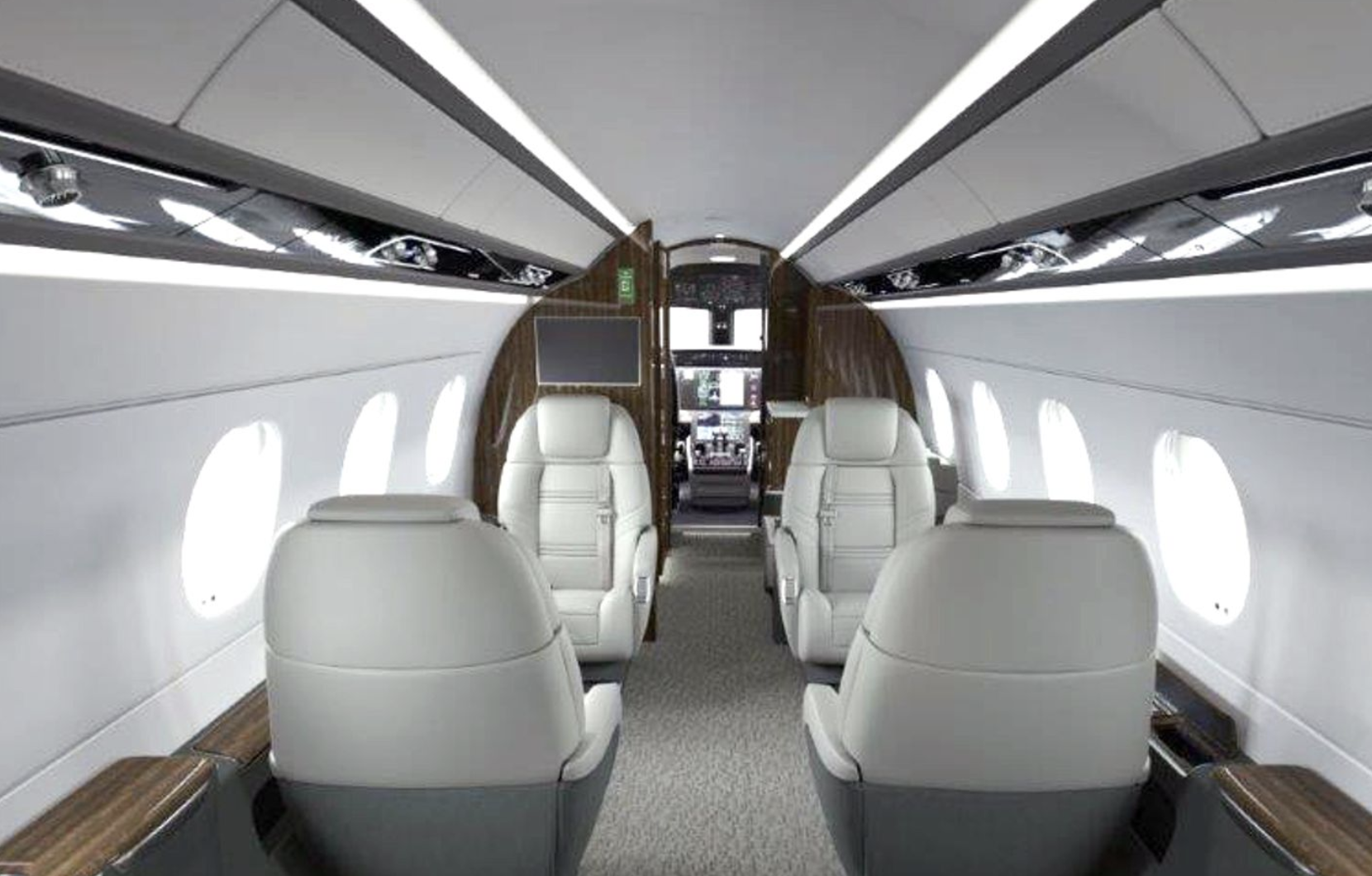
The Learjet 35 and Learjet 35A are light-size private jets designed and manufactured by Learjet Corporation, which is now part of Bombardier Aerospace. The Learjet 35A is an upgraded version of the original Learjet 35, featuring several improvements and enhancements.
Both the Learjet 35 and Learjet 35A have a length of 48 feet 8 inches (14.83 meters) and a wingspan of 43 feet 9 inches (13.34 meters). Their maximum takeoff weight is 18,300 pounds (8,301 kilograms), and they have a service ceiling of 45,000 feet (13,716 meters).
Manufacturing Dates
Production Start:
1976
Production Ends:
1992
Cabin Category
Light Cabin
Cabin Size & Passengers
Height
4.3 Feet
Width
4.9 Feet
Length
12.9 Feet
Seating Capacity
Up to 8
Range
1,930 nautical miles
Speed
High-Speed Cruise:
Mach 436
Long-Range Cruise:
Mach 424
Max Operating Speed:
Mach 470
Baggage Space
40 cubic feet
Access
Fractional Ownership:
No
Dedicated Jet Card:
Yes
Pricing
A new Bombardier Learjet 35A is listed at $3,500,000.
The price for a used Bombardier Learjet 35A is $950,000.
Development of the Learjet 35 began in the early 1970s. Bill Lear, the inventor of the Learjet, led the project. The Learjet 35 made its first flight in August 1973. It was certified by the Federal Aviation Administration (FAA) in July 1974. In the early 1980s, Learjet introduced an upgraded known as the Learjet 35A.
The Lear 35A and Lear 35 have the same cabin size: 4.3 feet wide, 4.9 feet high, and 12.9 feet in length. The cabin can accommodate up to eight passengers. However, it does not have a fully enclosed toilet.
The Learjet 35 has a range of up to 2,056 nautical miles (2,366 miles) and a maximum cruise speed of 518 knots (597 mph). The Learjet 35A has a range of up to 2,789 nautical miles (3,206 miles) and a maximum cruise speed of 518 knots (597 mph). Two Garrett TFE731-2 turbofan engines also power it but has several improvements over the original Learjet 35, including a higher maximum takeoff weight, improved avionics, and enhanced cabin comfort.
The Learjet 35 and Learjet 35A were priced at around $3 million to $4 million. Preowned Lear 35 and 35As sell for under $1 million.

Find the perfect solution for your private aviation needs
Save Time. Buy Confidently.


